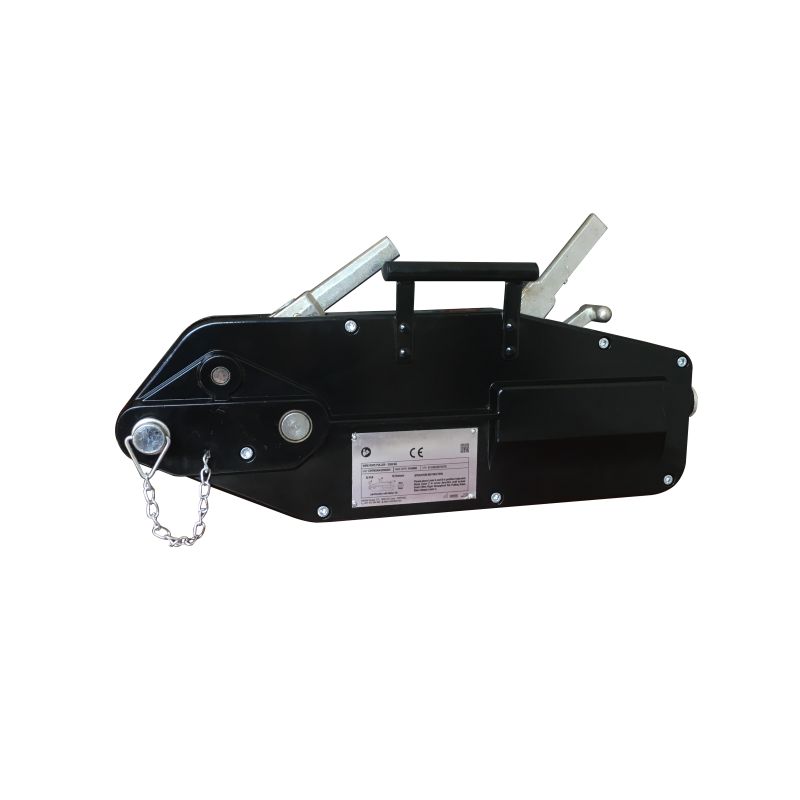Components of a Manual Wire Rope Winch
2024-06-06
A manual wire rope winch is a mechanical device used for lifting, pulling, and positioning heavy loads using a hand-operated crank mechanism. It consists of a drum or spool around which wire rope is wound, a gear or ratchet mechanism for controlling the direction and speed of the wire rope, and a handle or lever for manual operation. Manual wire rope winches are commonly used in various industries, construction sites, workshops, and outdoor activities where a portable and versatile lifting or pulling solution is required. Here's an overview of the components and operation of a manual wire rope winch:
Components of a Manual Wire Rope Winch
1. Drum or Spool: The drum or spool is the central component of the winch around which the wire rope is wound. It provides the mechanical advantage for lifting or pulling heavy loads.
2. Wire Rope: The wire rope is wound around the drum or spool and serves as the lifting or pulling medium. It is typically made of high-strength steel wire for durability and load-bearing capacity.
3. Gear or Ratchet Mechanism: The gear or ratchet mechanism controls the movement of the wire rope, allowing it to be wound or unwound in a controlled manner. It may include gears, pawls, or locking mechanisms to prevent reverse rotation and ensure safety during operation.
4. Handle or Lever: The handle or lever is used to manually operate the winch, providing the mechanical force to lift, lower, or pull the load. It may be a hand crank, lever arm, or ratcheting mechanism, depending on the design of the winch.
5. Frame or Housing: The frame or housing provides support and protection for the internal components of the winch. It may be made of steel, aluminum, or other sturdy materials to withstand the forces exerted during operation.
6. Mounting Hardware: Mounting hardware such as bolts, brackets, and clamps is used to secure the winch to a fixed structure, vehicle, or mounting platform. This ensures stability and safety during operation.
Operation of a Manual Wire Rope Winch
1. Load Attachment: Securely attach the load to the wire rope using appropriate rigging hardware such as hooks, shackles, or slings. Ensure that the load is properly balanced and centered to prevent tipping or shifting during operation.
2. Handle Positioning: Position the handle or lever of the winch in the appropriate operating position, either for lifting, lowering, or pulling the load. Engage any locking mechanisms or brake systems to prevent unintended movement of the load.
3. Operation: Turn the handle or operate the lever in the desired direction to wind or unwind the wire rope. Apply steady and controlled force to gradually lift, lower, or pull the load to the desired position.
4. Monitoring: Monitor the movement of the load and the tension on the wire rope during operation. Adjust the handle position or speed of operation as needed to maintain control and prevent overloading or slippage.
5. Safety Precautions: Follow safety guidelines and precautions provided by the manufacturer, including load capacity limits, proper rigging practices, and use of personal protective equipment (PPE) such as gloves and safety glasses.
6. Maintenance: Regularly inspect and maintain the manual wire rope winch to ensure proper functioning and safety. Check for signs of wear, corrosion, or damage, and lubricate moving parts as needed to prolong the life of the winch.
Applications of Manual Wire Rope Winches
1. Construction and Building: Lifting and positioning heavy materials, equipment, and scaffolding on construction sites and building projects.
2. Vehicle Recovery and Towing: Pulling vehicles out of mud, snow, or ditches, and securing cargo on trucks, trailers, and off-road vehicles.
3. Marine and Boating: Hoisting anchors, lifting and lowering boats, and securing cargo on boats, docks, and piers.
4. Outdoor and Recreational Activities: Setting up tents, canopies, and temporary shelters, and hauling gear and equipment during camping, hiking, and outdoor adventures.
5. Industrial and Manufacturing: Handling machinery, tools, and components in factories, warehouses, and production facilities.
Conclusion
Manual wire rope winches are versatile and portable devices used for lifting, pulling, and positioning heavy loads in various industries, construction sites, and outdoor activities. With their simple yet robust design, manual operation, and high load capacity, wire rope winches provide an efficient and cost-effective solution for lifting and pulling tasks where access to power sources or hydraulic systems is limited. By following proper operating procedures, safety precautions, and maintenance guidelines, manual wire rope winches can safely and effectively handle a wide range of lifting and pulling applications, making them indispensable tools for professionals and enthusiasts alike.



